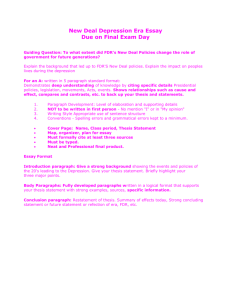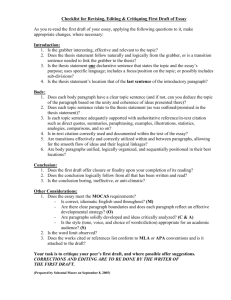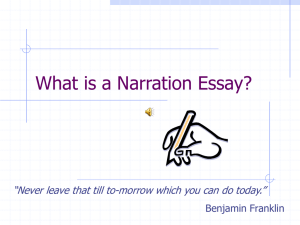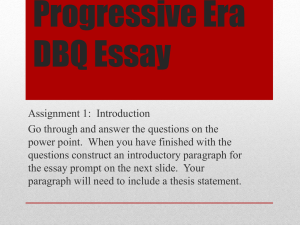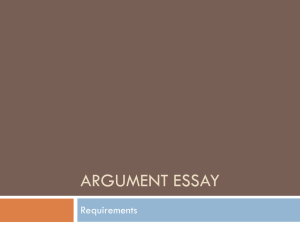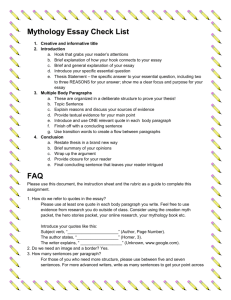OrientationFall2013
advertisement
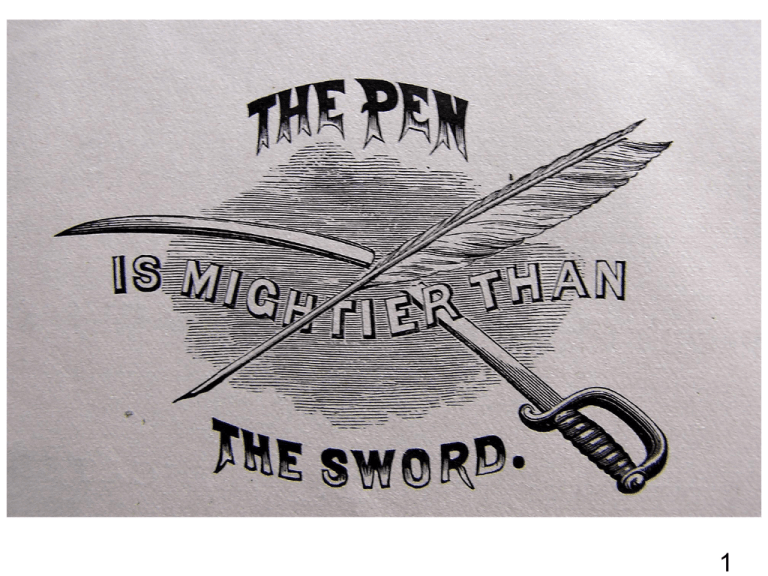
1 The pen may be mightier than the sword, but only if you know how to use it. 1. Choose your weapon wisely. 2. Stay focused. 3. Play by the rules. 2 1. Choosing the weapon: use the best form. Ask: What is my purpose and who is my audience? Narrative essay: Telling a Story Descriptive essay: Painting a picture Expository essay: Just the facts Definition-explain what something is Compare/Contrast- show how two things are the same or different Cause/Effect-explain the cause of something or the effect something produced Process - “How to” Persuasive/Argumentative essay: Convince me Research paper: evaluate and analyze 2. Stay Focused. ● Follow the steps of the writing process 1. Choose a topic 2. Brainstorm and outline 3. Write the first (rough) draft 4. Revise and Edit 5. Rewrite the final copy 4 ● Use an outline Sample outline for a basic essay... I. Introduction (1-2 paragraphs) A. Attention getter (get the reader interested) B. Connecting information (connect the attention getter to the thesis) C. Thesis Statement (the main point of your essay) II. Body (as many paragraphs as you need to explain and support your thesis, usually, at least 3) A. Supporting Paragraph 1 B. Supporting Paragraph 2 C. Supporting Paragraph 3 III. Conclusion (usually 1 paragraph) A. Summarize your main points B. Restate the thesis statement (using different words) C. May include a suggestion, prediction, or opinion ● Have a clear thesis statement (the main idea or point of your paper). Do have a sharp, clear main idea or point you are making. And make it at the beginning or your paper. Do not make the reader have to figure out the main point; it should be obvious. Do STICK to the point: do not ramble or go off topic. Every paragraph should explain your thesis. 6 3. Play by the rules ● Do not plagiarize (steal the words or ideas of another). Use quotes, and cite ALL sources. ● Use the Chicago Manual of Style to format your papers and cite your sources. http://owl.english.purdue.edu/owl/resource/717/ 01/ 7



